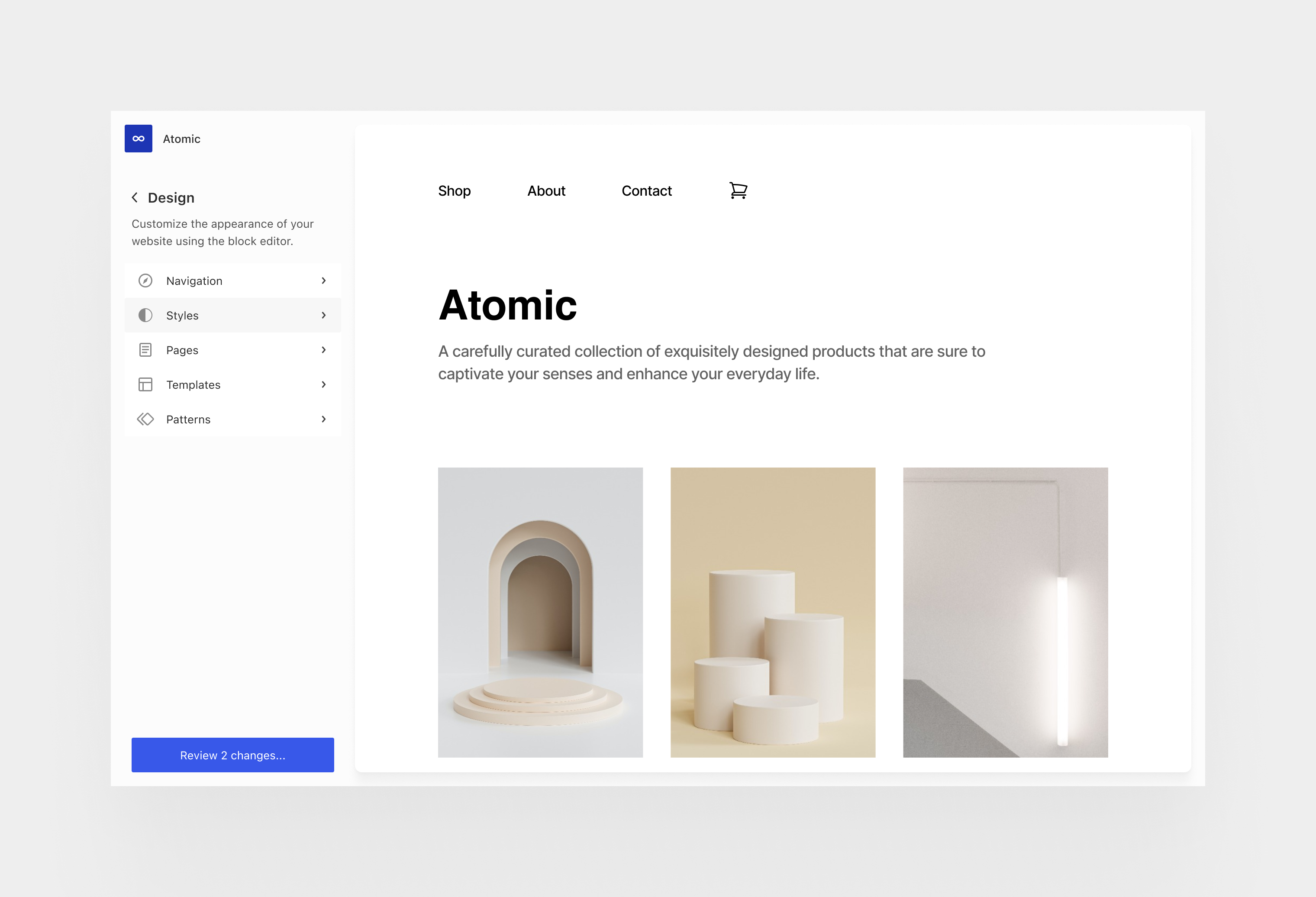My Best Advice for WordPress Product Businesses in 2026 and Beyond
The next era of WordPress products won’t be won by features or AI, but by clear, intuitive experiences that make users feel capable from the first click.
If you build WordPress products for a living, you play within the well-drawn lines of the WordPress admin, PHP, React, and now AI. But you also feel it in the air; the subtle way the technological map of our ecosystem is being redrawn beneath our feet.
For years, the rules were clear. Build something useful, ship fast, support well, repeat. Add features, write docs, stay compatible. But those lines are blurring. Core is adopting AI and MCP faster than anyone expected. MCP will subtly transform the definition of “WordPress development.” AI is rewriting how users learn, search, and build.
The familiar path is fading. But there is a way forward.
I email once a week about my writings, it’s unique content you won’t get anywhere else, and I reply to every email I receive from those emails. If you’d like to hear more from me, subscribe here and let’s chat about how you can be more successful in your WordPress product business.
Subscribe
So is “learn AI deeply” the thing that will make products last? Partly. I think the real magic that will separate products that stand in five years from those that don’t is one thing: User Experience. The products that help users reach value faster than expected; that make people feel capable the moment they click “Activate” will drive the future while the others languish.
In 2026 and beyond, user experience isn’t a layer on top of your product. It is the product.
Why Feature-Building Has Stopped Working
WordPress has always rewarded function over form. We built plugins like we built toolkits; more options meant more power. We gave users form fields, settings, and toggles. We asked them to make decisions before they even knew what the outcome should look like. We said “decisions, not options,” but our products still ended up as a buffet of everything at once.
That approach worked when tinkerers made up our audience. But the next generation of users expects clarity before control. They expect to see the end result, not assemble it.
The cost of building for features isn’t only clutter; it’s hesitation. Every new decision you ask a user to make adds mental friction. Every toggle they don’t understand is another reason to give up.
You can see it across the ecosystem. Products that once thrived on flexibility now drown in it. The user doesn’t want 50 ways to achieve an outcome or to navigate 20 different settings screens. They want one clear path that makes sense.
What Elementor taught the rest of us
As Elementor rapidly grew in adoption, it changed the game. It made us rethink how we design web pages.
It gave people a blank canvas that immediately showed results. It didn’t ask them to imagine what their page might look like. It showed them. It built confidence before comprehension.
We often say “of course it’s visual, it’s a page builder,” and move on. But that’s the wrong lesson. Elementor didn’t win because it built pages; it won because it visualized success. It made WordPress feel alive and responsive to human intentions.
As Joost de Valk pointed out in Elementor: WordPress’ Secret Growth Driver, Elementor may be directly responsible for much of WordPress’s recent growth. Its rise didn’t just reflect the ecosystem—it fueled it. That alone should make every product founder pay attention: the fastest-growing part of WordPress was driven by user experience, not new technology.

That same principle applies to every product category. A calendar plugin can visualize a full event schedule the moment it is activated. A form builder can display a ready-to-use template that collects real data without delay. A newsletter plugin can preview a polished campaign before the user writes a single line.
Every plugin has a story to tell. The question is: are you making the user imagine it, or experience it?
Design is the next growth strategy.
If there’s one thing I’d bet every WordPress product founder should do in 2026, it’s this: hire or partner with a designer. Not for a logo. For your whole product business.
Many plugin business founders are engineers-founders. They think in logic, flow, and code. That’s why so many WordPress products look like developer tools built for other developers. The missing ingredient isn’t effort; it’s empathy.
Bring in a UI/UX designer who can translate your product’s purpose into emotion. Let them reimagine your main user flow; not as a screen of fields, but as a story of progress. Their work will outlast every new framework you chase.
Once that UI takes shape, let them build a design system that defines your product’s visual language: buttons, spacing, typography, and tone. This doesn’t only give your product more polish; it gives it coherence. It makes your entire roadmap cheaper to build and easier to love.
And as WordPress Core evolves its own design system, align with it. Let your product feel native, not foreign. The best design doesn’t compete with WordPress; it enhances it.

The Real Test of Experience
Good design turns heads. Great design is basically invisible.
Once your interface looks modern, your next task is to make it feel frictionless. Count the clicks, the refreshes, the moments of hesitation. Audit how many actions stand between a new user and their first moment of value. Then remove as many as you can.
At GiveWP, we learned that fewer steps from install to first donation helped retention more than any campaign or feature update. Once users experience success, they stop being customers and start being believers.
UX isn’t box-shadows and gradients; it’s intuition disguised as empathy. When you make your product feel lighter, you make your users feel smarter.
Portability: The Quiet Advantage
If you design your product right, you’ll unlock something unexpected: portability.
The future of the web as we know it is shifting. WordPress’ MCP integration will merge plugin and site experiences. AI-driven assistants will guide workflows that used to depend on documentation. Playground and headless frameworks are stretching the boundaries of where WordPress can live.
But here’s the truth: great experiences survive every transition. When your product’s value is clear, when its interface speaks for itself, you can take it anywhere: into the block editor, into a SaaS wrapper, into whatever new interface emerges next.
Portability isn’t about leaving WordPress behind. It’s about building something strong enough to outlive any version of it.
Write your code with reuse in mind. Architect around APIs. Design with independence, not isolation. Because when the map redraws itself again—and it will—you’ll still know where your north star is.
The Builders Who Will Thrive
The WordPress companies that survive the next wave won’t be the biggest or the loudest. They’ll be the ones that make people feel capable.
They’ll hire designers who can see what developers can’t. They’ll measure friction the way they measure conversions. They’ll build design systems that scale their judgment, not their code.
AI will evolve. Frameworks will come and go. But clarity, intuition, and empathy will still be the foundations that hold.
If you want your WordPress product to survive what’s coming, don’t chase the next big thing. Build something that deserves to exist, no matter where the map redraws next.
UPDATE: If you want to hear a bit more of a behind-the-scenes of this post; Nathan at WP Builds asked me for an interview about this post. Listen to it anywhere you do your podcasts, or here: https://wpbuilds.com/2025/10/23/442-matt-cromwell-on-preparing-wordpress-products-for-a-changing-demographic-and-ai-revolution/
I send one email a week with original content I don’t publish anywhere else. I read and reply to every response—so if you’re growing a WordPress product business, subscribe and let’s talk.
Subscribe
Subscribe with your favorite RSS reader:

Elementor democratised development, giving designers a tool to achieve what only developers were able to do.
Where Elementor falls short, I think, is the page building experience for business folks that don’t want to have to wear a designer’s or developer’s hat.
Which is why page builders like WPBakery, Divi and Avada are still relevant – they offer a UI to those who want to be as removed as possible to any form of dev.
Try getting the attention of a busy Marketer to teach him/her the different between Flexbox and Grid…
I think you’re 100% right, particularly in the context of AI having a chat box face. It’s much easier to drag and drop and element than have to type “move the box to the left to the one that have an image in it”.
Thanks Lawrence; honestly, the only reason why we can have opinions like yours about the UI of Pagebuilders is because of how Elementor changed the paradigm in the first place. I’m old enough to remember how WP Bakery was just shortcode soup for soo long! Their focus on UI means everyone had to follow suit or start looking even more terribly outdated.
Thanks for reading and chiming in!
Excellent breakdown, I completely agree with the challenges you described. For our projects we started using professional freelancers and experts for our service, and it has simplified the entire process. It’s refreshing to see technology finally making link acquisition smarter, not just faster.https://webdesignfreelancermunchen.de/
Nice article, Matt! I totally agree with the shift you talk about where experience > features when users hit “Activate”. I’ve seen firsthand how fewer clicks + clearer flows keep people around longer.
That bit on hiring a designer for the product (not just the logo) really resonated me. I’ve wasted too many hours burying users in settings when I should’ve been asking “what’s the *moment of value?” instead.
Thanks for sharing this! Hope you have a follow up article with a moments checklist and to see you again at another WorldCamp.
So glad to hear it resonates, Manny! If you’ve got a before/after of any UI work you’re doing that focuses on that “time to first value” (see related post below) I’d love to see it.
https://www.mattcromwell.com/not-intuitive-and-time-to-value/
Great thought piece Matt, agree on your overall thesis here. Users expect a good UX today that more immediately solves their problem and WordPress can evolve with that, but only if we as a community and product owners build our product with that top of mind. I think this combined with WordPress known extensibility and things like MCP, WordPress can provide users with not only a great UX, but one they can easily change to a user’s unique needs that open source has always been so good at. Thanks for sharing Mat!
For sure the hope of MCP empowering prompt-based changes and results is a big deal. I’m not convinced the road to that success is as easy as we currently think it is. Feels like there’s lots of room for it to be a BAD user experience too. But still, I’m hopeful. Thanks for reading and chiming in!